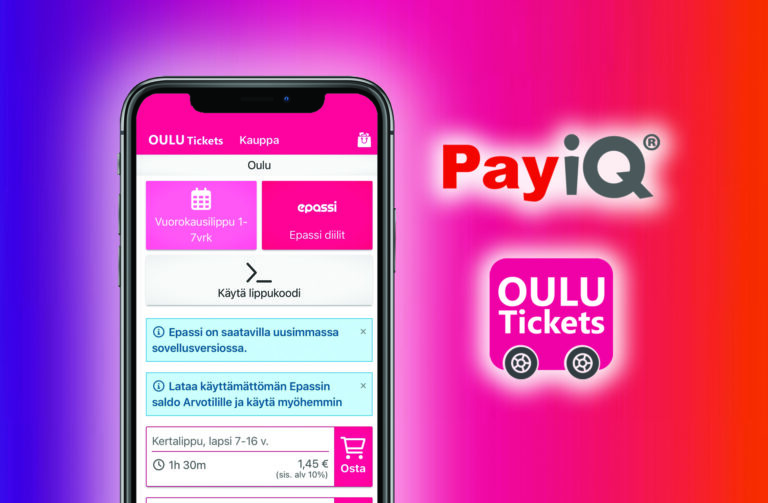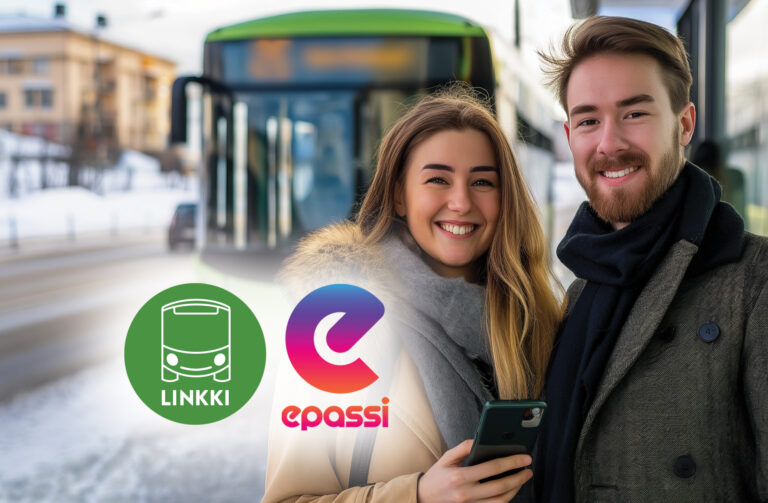Public transport’s mobile tickets are a contemporary solution. Real-time data benefits passengers and generates new, customised transport services. PayiQ is building an ecosystem for more intelligent ticket sales.
Author Helen Partti, Photo Suvi Elo
The next problem is familiar to many people using public transport: due to the coronavirus pandemic, they have to work remotely but have no idea how long this work mode will last. Should they buy a season ticket for the bus or train?
The passengers of Turku region public transport, or Föli, have a clever solution to the problem: the best fare ticket. The fare will change according to travel history and will never exceed day or week-specific pricing. The application can also be used to buy other ticket products and top up the travel card.
The application was developed by PayiQ, a Turku-based company. The company received the ICT-teko prize awarded by Turku Chamber of Commerce in 2020. Of the single tickets sold by PayiQ in the Turku region, more than 60 percent are best fare tickets.
”This is an excellent service from the point of view of the user. Using cash is problematic, and a travel card can no longer be topped up on the bus in Turku. Paying with a smartphone is easy and safe,” says Pirkka Lankinen, Managing Director of PayiQ.
The popular application is part of the extensive Mobility as a Service (MaaS) package, to which societies in different parts of the world are heading with urbanisation and digitalisation. PayiQ offers corresponding applications in many cities.
MaaS combines mobility needs, and the user decides which parts they want to use in their daily lives. Smart public transport is based on real-time data. However, the data is very fragmented and is not utilised to the full.
”The data is not intelligent unless it is in use,” says Lankinen.
Instead of an information security risk, the data collected can be seen as an enabler.
Ecosystem of different operators
The use of data and the management of dozens of related applications can easily give you a cold sweat. You must register in one application and identify in another. You are constantly concerned about your information security. Who is collecting my data and how is it used?
Lankinen perceives the matter differently: data is an enabler. It calls for cooperation between several operators, or an ecosystem that makes the whole work.
”It all starts from selecting good, secure partners.”
PayiQ has collected different actors into its ecosystem, such as carefully selected cloud services and payment service companies to ensure that payment transactions run reliably.
” We have an anti-fraud feature in all of our applications. Combatting fraud is at the core of our system, and all tickets are checked every time they are used.”
The end user can thus rest assured that the mobile application provides secure data protection. The importance of security is emphasised even more as the use of mobile tickets increases, and thereby also mobile payment.” According to Lankinen, already over a half of the payments made through PayiQ are mobile, i.e. people do not have to enter credit card details.
From an ICT expert’s point of view, mobile applications are not only secure but also logical to use. People usually browse their smartphones a moment before boarding a bus or train and can see from it the price of the trip or the ticket’s remaining validity period, for example. This is not possible if the trip has been paid for with a credit card. The credit card is just cold plastic, while a phone feels warm in the hand and the user knows it thoroughly.
Combining data saves money
The increased use of mobile tickets has also produced financial benefit to passengers in the area covered by Föli. Transport companies can receive real-time data on passengers’ mobility practices and can thereby price their service flexibly.
Service providers can reduce or increase their prices according to the time of day. In addition, there will be less congestion, as people can run their errands with a lower fare before noon than during the busiest peak hours.
An intelligent city serves its residents the better the more effectively it combines real-time data in its different functions. Lankinen believes that user-friendly methods will increase and will not be confined to public transport only. They can also cover municipal services, for example.
















